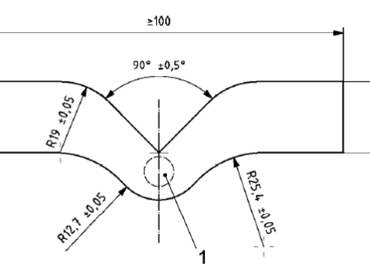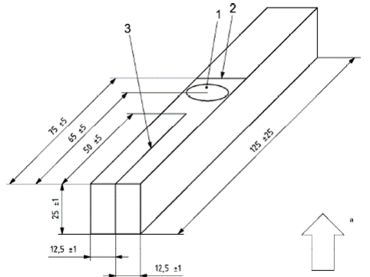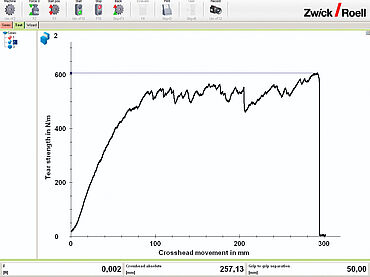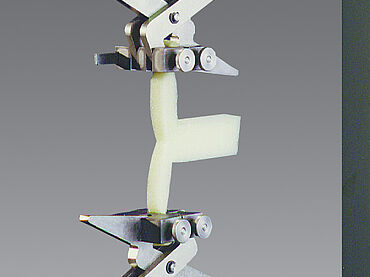ISO 8067 Tear Strength Soft Foam
The international ISO 8067 standard establishes a method for determining the tear strength of a pre-damaged soft foam specimen using a tensile test.
ASTM D3574 Test F also deals with the tear strength on soft foam, but differs in technical content and the results cannot be directly compared between the two methods.
Specimens Running a test and test equipment Standards overview Request a consultation Downloads
Specimens to ISO 8067
The ISO 8067 standard specifies two types of specimens: Method A uses a trouser specimen, while method B uses an angle specimen. Angle specimens, on the other hand, are not permitted in the corresponding ASTM 3574 test F standard.
Determination of the tear strength and applicable test equipment in compliance with ISO 8067
The tear strength test in accordance with ISO 8067 is used to determine the tear strength or tear resistance of a flexible cellular polymeric material. When subjected to a tensile load, a stress peak forms at the end of the crack in which material failure occurs. The tear resistance is specified in N/cm in relation to the width.
Trouser and angle specimens are defined by the standard (see above), whereby the trouser specimen is only addressed in the ISO 8067 standard. Unlike rubber, it is loaded to crack opening (mode I).
- For trouser specimens, crack propagation takes place along the longitudinal axis of the specimen over a distance of approximately 25 mm, which means that a larger area is covered. This increases the probability of encountering an area with a closer cellular structure, which is then responsible for a higher maximum force. Since the crack is introduced by an incision, this method evaluates the force required to propagate a crack.
- The angle specimen is loaded without an incision. Although this also creates a stress peak, it is not located in front of a sharp incision. With this method, the crack is driven transverse to the longitudinal axis of the specimen.
- The results of the trouser specimen are significantly lower and scatter much more as compared to those of the angle specimen. In a round robin test carried out as part of the development of ISO 8067, comparative precision of the trouser specimen was 16 to 36 %—around three times higher than that of the angle specimen.
The tear strength test according to ISO 8067 can be carried out with a zwickiLine series electromechanical testing machine. Since the forces are relatively low, a load cell must be used that still achieves Class 1 measurement accuracy in the force range used. Displacement measurement is not required, since tear resistance is calculated from the maximum force that occurs during the test. In practice, the tear growth is often depicted as a graph that follows the travel of the tightening clamp.
The testXpert testing software controls the test sequence and evaluates the tear growth in accordance with the standard.

Reliable calculation and reporting of test results according to ISO 8067
Our testXpert testing software supports efficient testing and reliable results through:
- Simple operation: start testing right away and be a testXpert while maintaining maximum safety.
- Reliable and efficient testing: benefit from reliable test results and maximum testing efficiency.
- Flexible integration: testXpert is the optimal solution for all of your applications and processes—simply put, a more effective workflow.
- Future-proof design: testing software for the entire life cycle, ready for your future test tasks!
Standards used for determination of the tear strength of soft foam
The international standards for determination of the tear strength or tear resistance of soft foam are ISO 8067 and ASTM D3574 test F.
In the automotive industry, there are other test methods that are defined in separate factory standards:
- BMW QV 52009 – Part 1
- Daimler DBL 5452
- Ford WSS-M15P20-B1/B2
- General Motors GMW 15471
- PSA D 41 1048 & PSA D 41 1049
- VW PV 3410



